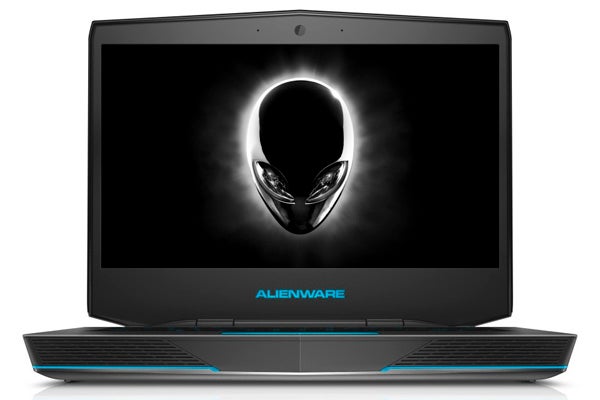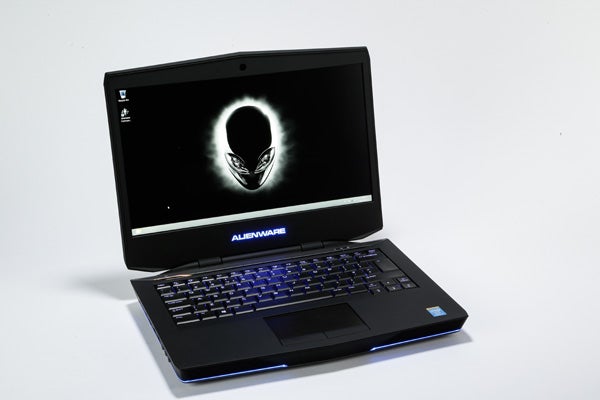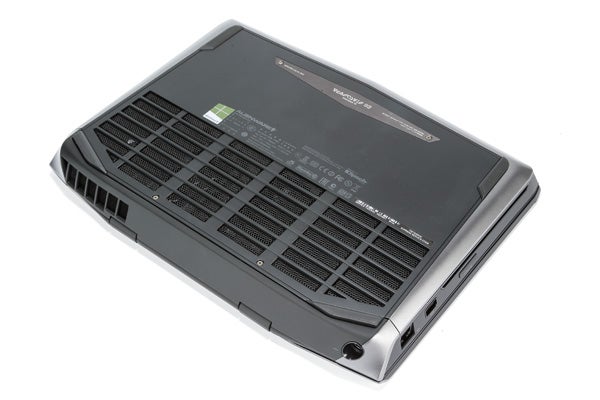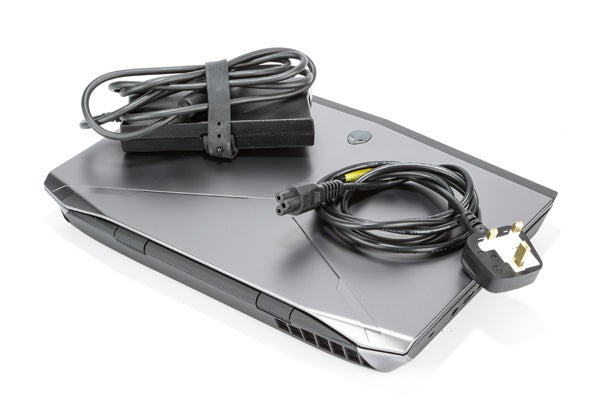Alienware 14 Review - Performance, Heat & Noise, and Battery Life Review
Performance, Heat & Noise, and Battery Life
Alienware's new 14-inch gaming laptop is stylish, powerful and... expensive.

Sections
- Page 1 Alienware 14 Review
- Page 2 Performance, Heat & Noise, and Battery Life Review
- Page 3 Keyboard, Touchpad and Verdict Review
Alienware 14 – Performance
Given the Alienware 14’s
specifications, we were keen to put it through its paces in our standard
tests. We started off on PC Mark 07, where it did not disappoint with a
score of 6,009 – it smashed through the previous records set by the Gigabyte U2442V (5,066) and the Lenovo Thinkpad Carbon X1 Touch (5,056). Geekbench 3 backed this up, with an impressive score of 12,509 narrowly beating the gaming Asus G750JX (11,797) and only a little short of the 2013 27-inch iMac (14,462).
We
can’t say we’re surprised as the Alienware 14 is a really pleasant
performer in day to day tasks. Programs load quickly, tabs and
applications switch smoothly and thanks to the 256GB Solid State Drive
(alongside a 750GB SATA) boot up times are really impressive with 11
seconds for a reboot and just five from cold.
SEE ALSO: 10 Best Laptops

This
made the 3DMark gaming scores slightly vexing, with the early Ice Storm
and Ice Storm Extreme tests recording disappointingly low scores of
15,088 and 14,943, a long way behind the ASUS G750JX (107,738
and 89,413).
These are pretty standard laptop scores for onboard
graphics, which makes us suspect that the tests weren’t taxing enough to
throw the full might of the GeForce 765M graphics chip at (everything
ran perfectly smoothly on screen without, so why would it tax itself?)
The Cloudgate test began to put that right, with the Alienware 14
managing 11,197: the second best score we’ve recorded after, you guessed
it, the Asus G750JX (14,779). We ran the Firestorm test aimed at gaming
computers to settle this, and once again found the Alienware 14 coming a
little short of the Asus model, with 2,565 on the former and 3,133 on
the latter.
Benchmarks can only tell you so much, of course, and
to be sure we installed Crysis 2. At 1,920 x 1,080 with ultra detail. The
game was certainly playable, but not quite as smooth as it was on the
G750JX. Still, you should have no problem running most modern games –
Crysis 2 remains an intensive title, especially at the Alienware 14’s
native resolution.
SEE ALSO: Best Student Laptops round-up
Alienware 14 – Heat & Noise
When
browsing the internet and word processing, the Alienware 14 is pretty
much silent. It does get warm, however, with fans on the underside and on
the back, so your lap will get warm.
In
our gaming tests, however, things changed dramatically. The fans can
get extremely loud, similar to first generation Xbox 360s, which were
known amongst gamers for their ‘jet engine’ fans. On the plus side, it
gets slightly hotter, but not uncomfortably so.
Alienware 14 – Battery Life
If
you were looking for something to tear the Alienware 14 apart from the
Asus G750JX, it won’t be battery life. Alienware managed a minute longer
than the ASUS at three hours and 21 minutes in our standard tests at
40% screen brightness.
Impressively,
the software noticed the plug was taken out and suggested
battery-aiding settings (requiring a restart) to switch off the GeForce
graphics and fall back on the on board Intel graphics. Unfortunately,
this did nothing for us, in fact losing 10 minutes on a repeat test.
We
assume that if our battery test was more gaming based, we’d have seen
markedly different results, but don’t expect any improvements in
standard web browsing and word processing. Of course you could get
better results by turning off wireless communications, lowering the
screen brightness further and turning off the Alienware chassis lighting
effects.
In any case, a quick 30-minute charge brought back 17%
of the battery life. This is pretty poor – it equates to 34 minutes of
charger-free usage – barely any more than the time spent building the
charge in the first place.
How we test laptops
Unlike other sites, we test every laptop we review thoroughly over an extended period of time. We use industry standard tests to compare features properly. We’ll always tell you what we find. We never, ever, accept money to review a product.




